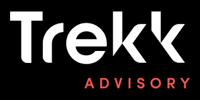DO YOU FEEL TRAPPED IN YOUR BUSINESS?
No Money, No Time, No Control - Sound Familiar?
I have a Single Goal... To Make Your Business Better and More Profitable than Before We Met.
We Have Helped Tradies Around the Country Build Businesses that Serve Them & Their Families!
If YOU would like to Learn the Principles of The Integrated Tradie™ and Achieve True Work-Life Balance, Book a Call with me below.
P.S. I'm a tradie just like you - not a salesman!









.png)
-(1).jpg)
.jpg)